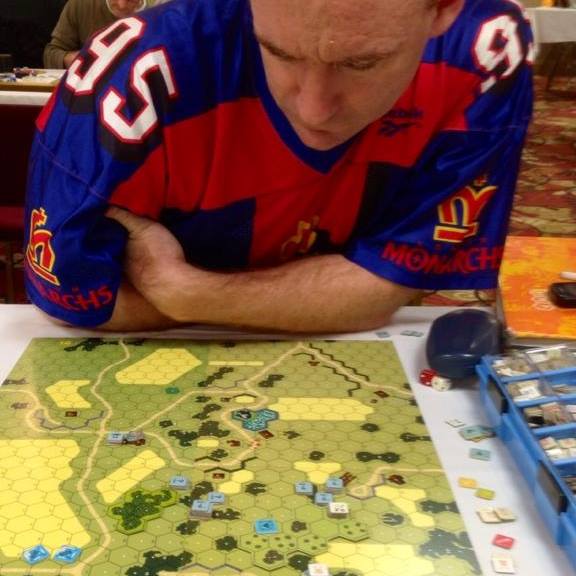
The area I most often get asked about, with regards to improving ASL play, is attacking with AFVs. Many players, it seems, are dissatisfied with their tactical play and feel they are not deriving the maximum benefits from their AFVs. Often they will declaim that their AFVs don’t last long and get destroyed by defending assets too quickly to make a useful impact.
I’ve been giving this subject some thought. There is indeed a colossal amount that AFVs can do and the top players routinely squeeze every iota of potential out of them. Beyond writing reams of useful advice (such as Jim has achieved in his excellent player’s guide to attacking), I have been wondering how to condense my own thoughts down to a solitary sentence. After much deliberation, here it is:
If in doubt, behave as a fleet in being.
In naval terms, a ‘fleet in being’ is a force that exerts an influence on enemy deployments and actions without ever leaving port. If it did leave port, it could be destroyed and therefore lose any influence over the enemy. It has to be kept in readiness to act, though, to be a constant threat – rusting hulks are not a fleet in being.
A good example of the power of the fleet in being in WW2 would be the Tirpitz in Norway, which never fired a shot in anger but tied up many British ships that could have been used elsewhere.
So, what do I mean in ASL terms? Well, if you can’t think of anything useful to do with your AFVs and suspect they will just get blown up if you move into LOS of enemy assets, then just keep them in reserve. They then maintain the potential to influence the scenario at a later point. Don’t make the mistake of thinking that you have to risk them as soon as they appear – that future potential will affect your opponent’s play. For example, he may risk less Defensive First Fire shots as he is worried about your AFVs charging in after the infantry. He may be loathe to reveal HIP guns that would otherwise safely be popping shots at your infantry, for the same reason. Certainly, he is far less likely to counterattack your infantry with his AFVs, for fear of leaving them vulnerable to your own. What I’m saying is this: keeping your AFVS as effectively a land-fleet in being, is not doing nothing with them – it restricts your opponent’s freedom of action. Of course, you gain nothing from keeping them safe on the last turn (barring a CVP cap, or some such), but until then, they can have far more an effect on the game than burning wrecks would, if you’d risked and lost them for no gain.
Editors Note: Once again, I am please to present some thoughts on ASL from Toby. I hope you enjoy them as well. Linked below is the episode of Illuminating Rounds where Toby speaks about these concepts in detail.


Makes sense!